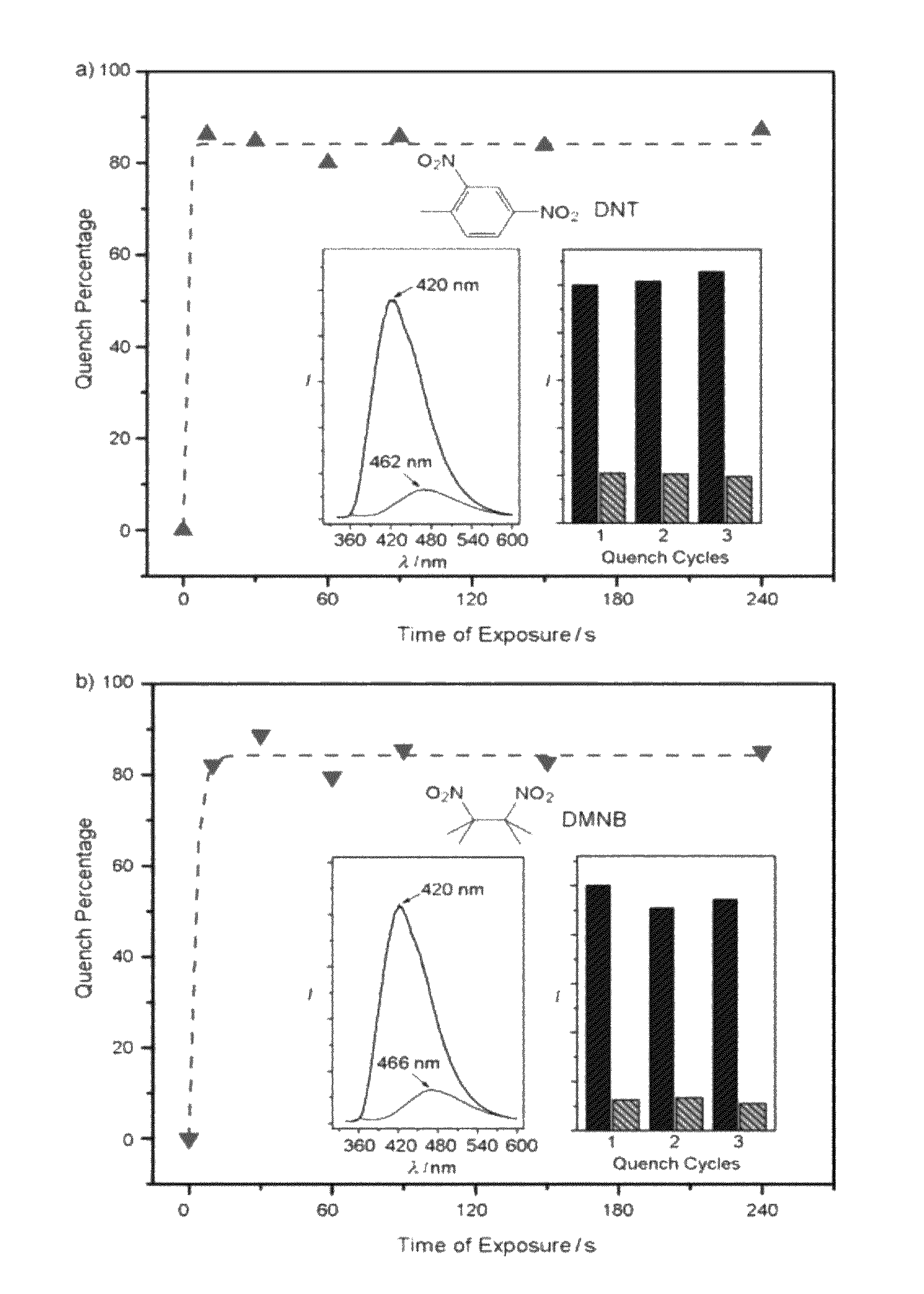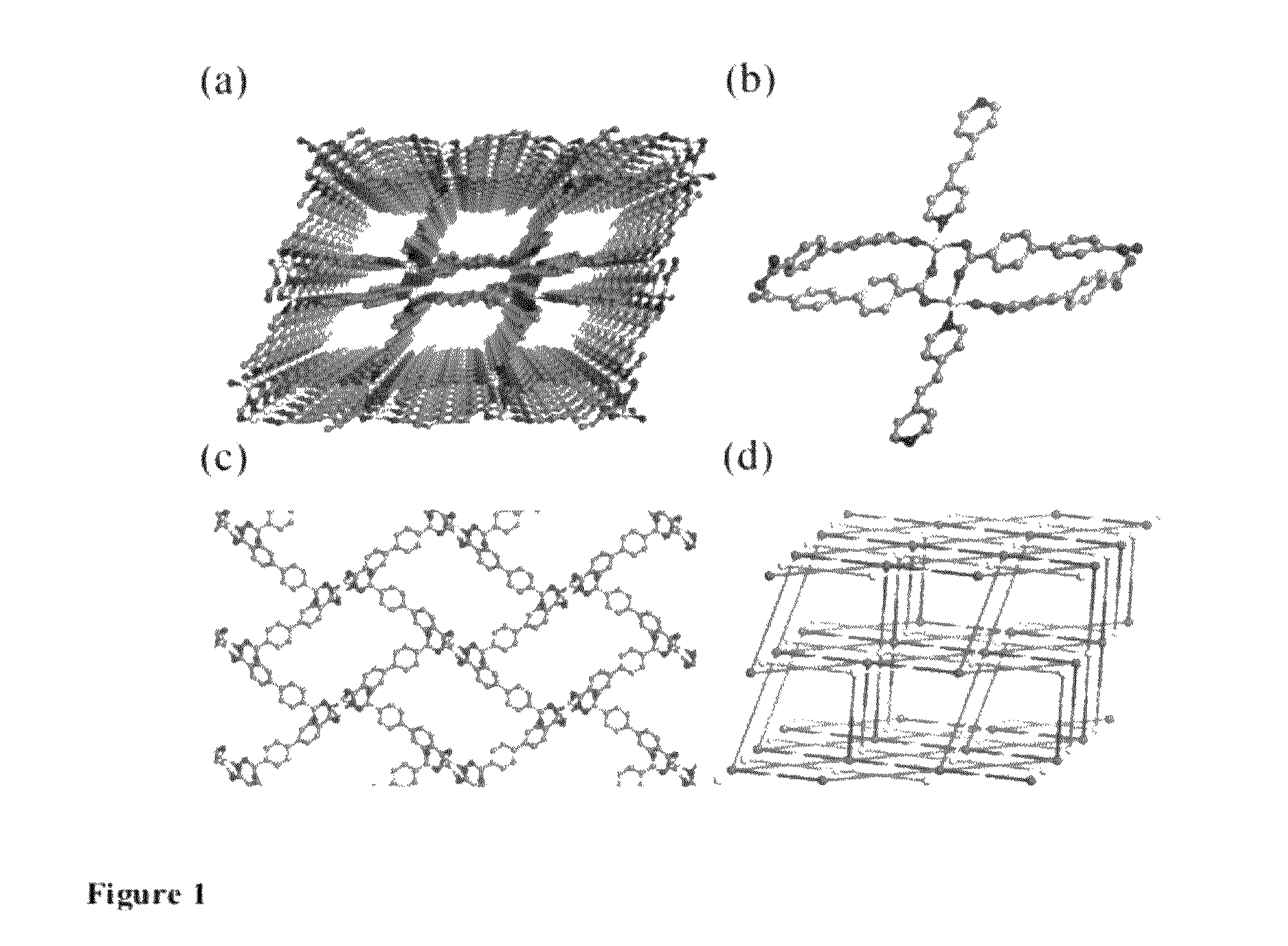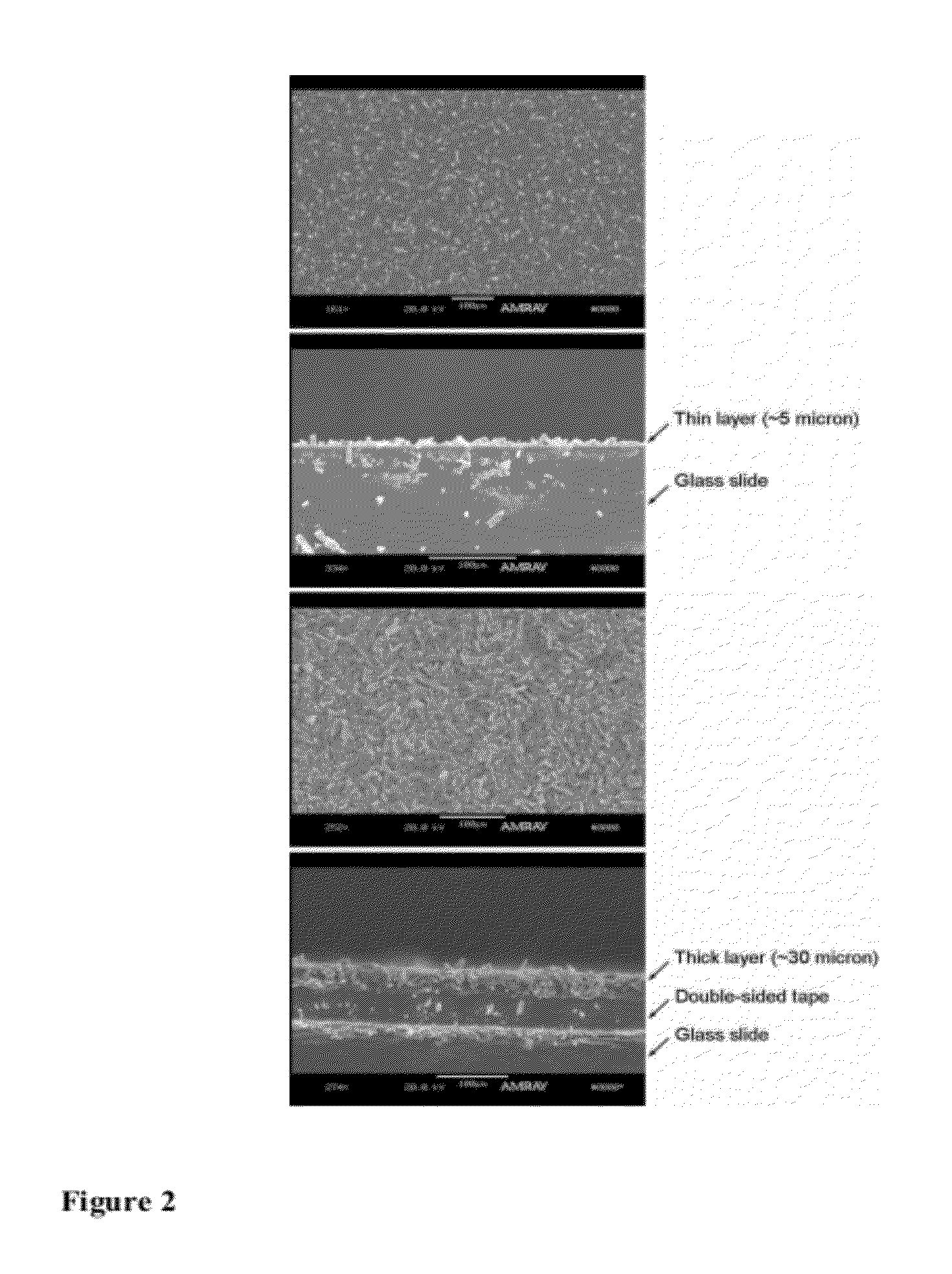Compositions and methods for detection of explosives
a technology of transition metal coordination and composition methods, applied in the field of composition and methods can solve the problems of mmof materials not being reported for the detection of explosives, and the failure to detect dmnb remains a great challenge, and achieves the effect of fast and highly reversible detection and unprecedented sensitivity
- Summary
- Abstract
- Description
- Claims
- Application Information
AI Technical Summary
Benefits of technology
Problems solved by technology
Method used
Image
Examples
example 1
Materials and Methods
[0159]A mixture of Zn(NO3)2.6H2O (0.0892 g, 0.30 mmol), H2 bpdc (0.0727 g, 0.30 mmol) and bpee (0.0547 g, 0.30 mmol) in DMF (15 mL) was heated at 165° C. for 3 days to afford colorless block-like crystals (1, 58% yield). A freshly made sample of 1 was immersed into methanol (3 days) and dichloromethane (4 days) consecutively for solvent exchange, followed by pumping at room temperature to afford 1′.
[0160]2,4-dinitrotoluene (99%) and 2,3-dimethyl-2,3-dinitrobutane (98%) were purchased from TCI America and used as received. About 1 g of each were placed into two small open vials and the vials were placed into two capped bottles four days before the fluorescence quenching experiments to ensure equilibrated vapor pressures were reached. The original fluorescence spectra of the layers (see Example 5 for the preparation of the layers) were collected (the peak intensities of which were used to correct the effects of variations in layer thickness and morphology) before ...
example 2
PXRD and TGA
[0163]Powder X-ray diffraction patterns of all samples were recorded on a Rigaku D / M-2200T automated diffractometer (Ultima+) using Cu Kα radiation (λ=1.5406 Å). The patterns were collected between a 2θ of 3° to 50° at a scan speed of 4 deg / min. Graphite monochromator was used and the generator power settings are at 40 kV and 40 mA. Thermogravimetric analysis was carried out on the TA Q50 thermal gravimetric analyzer with nitrogen flow rate and sample purge rate set at 40 mL / min and 60 mL / min, respectively. The temperature was ramped from room temperature to 600° C. at 20° C. / min.
[0164]As indicated by the intense and sharp PXRD peaks, 1′ remains highly crystalline although there are obvious shift of the peaks and emergence of new peaks. It is believed that this is caused by the distortion of the unit cell, resulting in a structure of lower symmetry, instead of collapse of the original structure, which usually leads to disappearance (or at least severe broadening) of the ...
example 3
Gas (Argon) Sorption and Pore Characterization
[0166]The gas-sorption measurements were performed on an automated gas adsorption analyzer Autosorb-1 MP (Quantachrome Instruments). The cryogenic temperature (87 K) was obtained using liquid argon as coolant. 97 mg as-made sample of 1 was used for gas sorption studies. The initial activation (outgassing) was performed under high vacuum at 408 K (135° C.) for over-night (about 10˜12 hours). The weight loss after activation was 15%, very close to the calculated weight loss of all guest molecules (15.6%). The crystallinity of the activated sample before and after isotherm measurements was double-checked (FIG. 7). Ultra high purity compressed Ar gas (99.995% purity) was used for the experiment. The BET and Langmuir surface areas (328 m2 / g and 483 m2 / g, respectively) and the total pore volume (0.165 cc / g) were deduced from the argon sorption results (shown in FIG. 8) using the Autosorb v1.55 software. QSDFT pore size distribution was calcula...
PUM
| Property | Measurement | Unit |
|---|---|---|
| reduction potential | aaaaa | aaaaa |
| optical band gap | aaaaa | aaaaa |
| 2θ | aaaaa | aaaaa |
Abstract
Description
Claims
Application Information
 Login to View More
Login to View More - R&D
- Intellectual Property
- Life Sciences
- Materials
- Tech Scout
- Unparalleled Data Quality
- Higher Quality Content
- 60% Fewer Hallucinations
Browse by: Latest US Patents, China's latest patents, Technical Efficacy Thesaurus, Application Domain, Technology Topic, Popular Technical Reports.
© 2025 PatSnap. All rights reserved.Legal|Privacy policy|Modern Slavery Act Transparency Statement|Sitemap|About US| Contact US: help@patsnap.com



